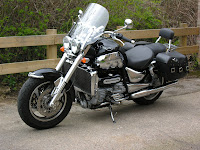"Kawasaki Ninja 250R"

The Kawasaki Ninja 250R (previous generations had market-specific names) is a motorcycle originally introduced by Kawasaki in 1983. As the marque's entry-level sport bike, The motorcycle has undergone few changes throughout its quarter-century lifetime, having received only two substantial redesigns. "Nomenclature" Motorcycle Kawasaki Ninja 250R Blue Series The fourth-generation model is marketed as the Ninja 250R in all markets. The motorcycle is also referred to by its platform designation, EX250, to which a generational suffix is attached. In the United States, previous generations of the bike (EX250-E/F/G/H) were already being marketed as members of the Ninja family of sportbikes, while outside of the U.S. the bike was known variously as the ZZR-250, ZX-250, or as the GPX-250R. One of the earliest generations, the EX250-C, was given the name GPZ-250. The Ninja 250R's particular ergonomics, chassis design, and engine placement have resulted in a motorcycle






